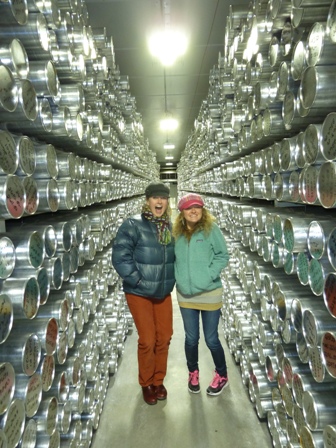Colorado’s record-breaking warm temperatures along with massive snow dumps on the East Coast, drought in California and the Pacific Northwest’s Pineapple Express rains have people across the country focusing on climate. Globally, negotiators are working on a draft deal at the U.N. climate talks in Geneva to address climate change right now.
And here in Colorado a new report “The Colorado Climate Change Vulnerability Study” was just published, analyzing the challenges that state residents and leaders face as climate change continues to expose Colorado to various vulnerabilities.
The report looks at many state sectors individually and among other findings, a press release on the report points to the following:
-
Water: The state’s reservoirs can provide some buffering against some expected increases in water demand and decreases in flow, but entities with junior rights or little storage are especially vulnerable to future low flows.
-
Agriculture: Rising temperatures, heat waves and droughts can reduce crop yield and slow cattle weight gain. Colorado farmers and ranchers are already accustomed to large natural swings in weather and climate, but may find it especially challenging to deal with expected changes in water resources.
-
Recreation: Climate projections show that Colorado’s springtime mountain snowpack will likely decline by 2050, with potential impacts on late-season skiing. Spring runoff season may also be earlier and shorter, which could affect rafting. But the recreation industry and some Colorado communities are already making changes that could help them adapt to a warmer future. For example, Telluride ski area now markets itself as Telluride Ski & Golf.
Although Colorado is vulnerable to a changing climate in more ways than those listed, the state has been preparing for an uncertain future through various long-term planning undertakings. That planning includes the development of Colorado’s Water Plan, currently in draft form, to be completed in December 2015. The water plan prepares the state for varying degrees of probable climate change, citing water supply availability as one of the primary drivers that decide how much water Colorado will need for the future. From the plan:
Water Supply Availability may similarly trend “lower” or “higher” depending on climate change, watershed hydrology, legal constraints associated with Colorado’s interstate compacts, water law, and environmental regulations. Water Supply Availability will also be assessed as trending lower or higher over time as compared to earlier versions of the Statewide Water Supply Initiative.
On March 13, the Colorado Foundation for Water Education’s annual Climate and Colorado’s Water Future Workshop will take a look at climate in Colorado, global climate data tracked through ice core samples, future risks to Colorado’s watersheds, and water supply planning in the face of climate change. Participants will also hear about and receive access to tools to better teach and communicate about climate. Register for the workshop to learn more about climate in Colorado.




 Print
Print
Reblogged this on Coyote Gulch.